Hawaii’s waterfalls capture the imagination like few natural wonders can—cascading ribbons of water tumbling through emerald valleys, creating pools so inviting they seem crafted by nature specifically for human enjoyment. While tourist guidebooks showcase the same handful of accessible falls, the islands harbor dozens of lesser-known cascades that offer equally stunning experiences without the tour bus crowds.
Most travelers never venture beyond the well-marked trails to discover these hidden gems. Here is a list of 17 waterfalls across Hawaii’s islands that remain relatively unknown yet completely accessible to determined explorers.
Waiale Falls
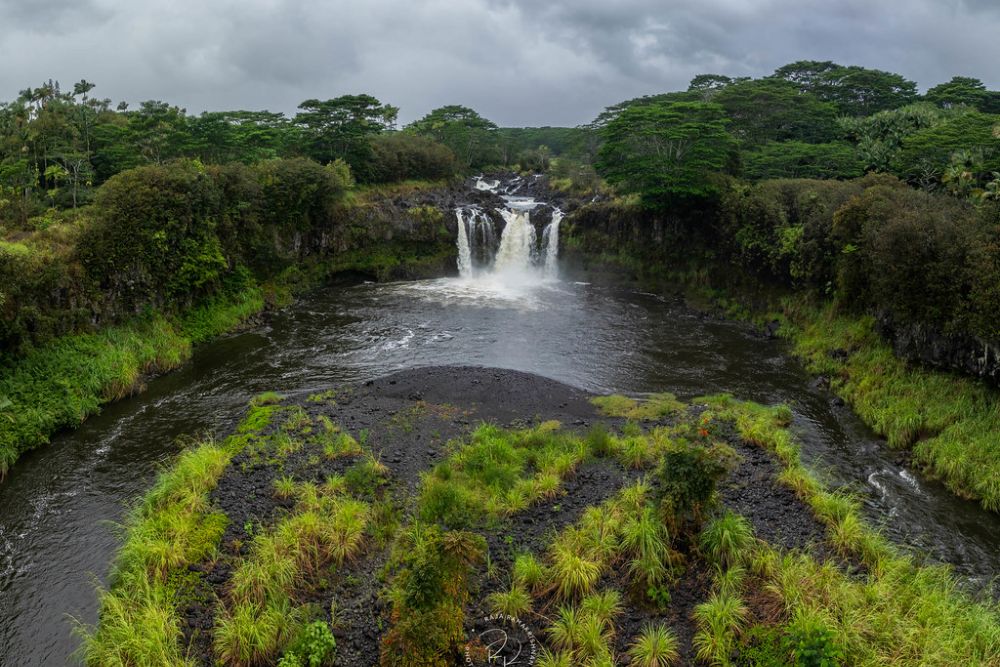
Tucked into Oahu’s Windward Coast, this 45-foot cascade drops into a swimming pool surrounded by towering cliffs and native vegetation. The quarter-mile hike follows an old plantation road that’s now overgrown, yet still manageable for most fitness levels.
Local families have been visiting this spot for generations, though it rarely appears in mainstream travel guides. The water stays refreshingly cool year-round, fed by mountain streams that filter through volcanic rock.
Lulumahu Falls
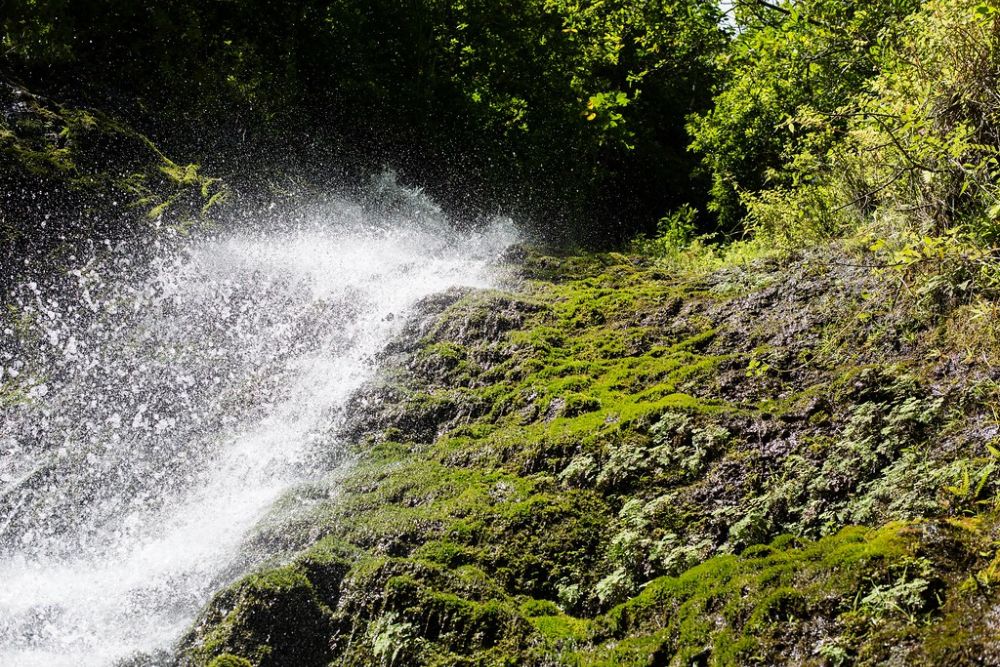
Hidden in a narrow valley behind Honolulu, this waterfall requires navigating through private property boundaries that have shifted over decades of development. The 30-minute trek winds through dense bamboo groves and crosses several stream beds before revealing the 50-foot falls.
Urban explorers discovered this gem by following old survey maps from the 1940s. The pool at the base stays surprisingly clean despite the urban setting, thanks to constant water flow from the Koolau Mountains.
Like Travel Pug’s content? Follow us on MSN.
Maunawili Falls
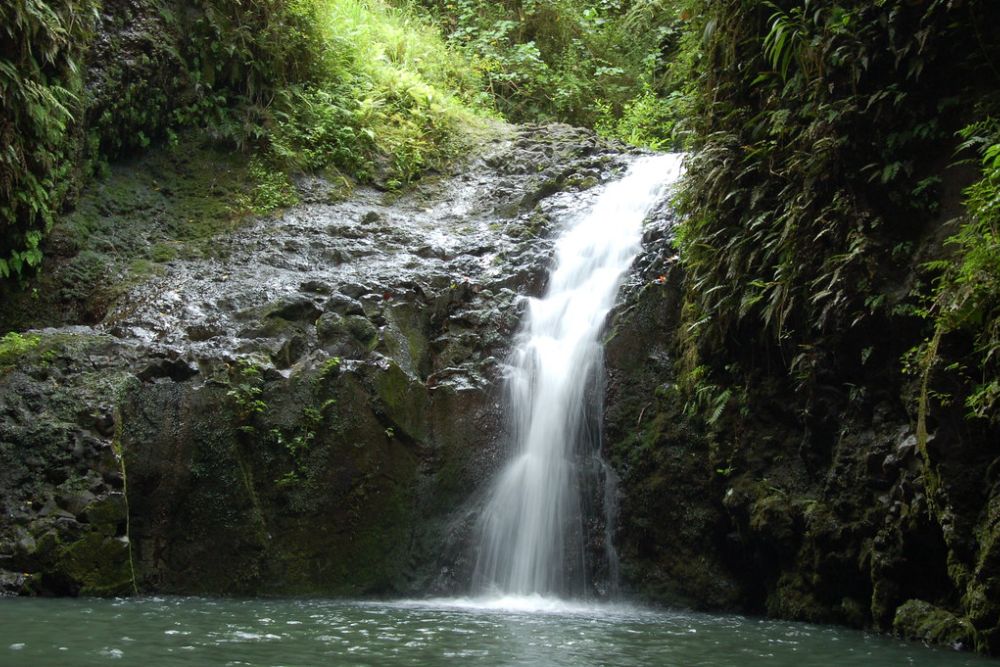
This East Oahu destination sits at the end of a muddy but manageable trail that crosses multiple streams and climbs through rainforest terrain. The waterfall drops approximately 20 feet into a deep pool that’s perfect for jumping—locals test their courage from the surrounding rocks.
Heavy rains can make the trail treacherous, yet the increased water flow creates a more dramatic cascade. The hike takes roughly 90 minutes round-trip through some of Oahu’s most pristine native forests.
Kapena Falls
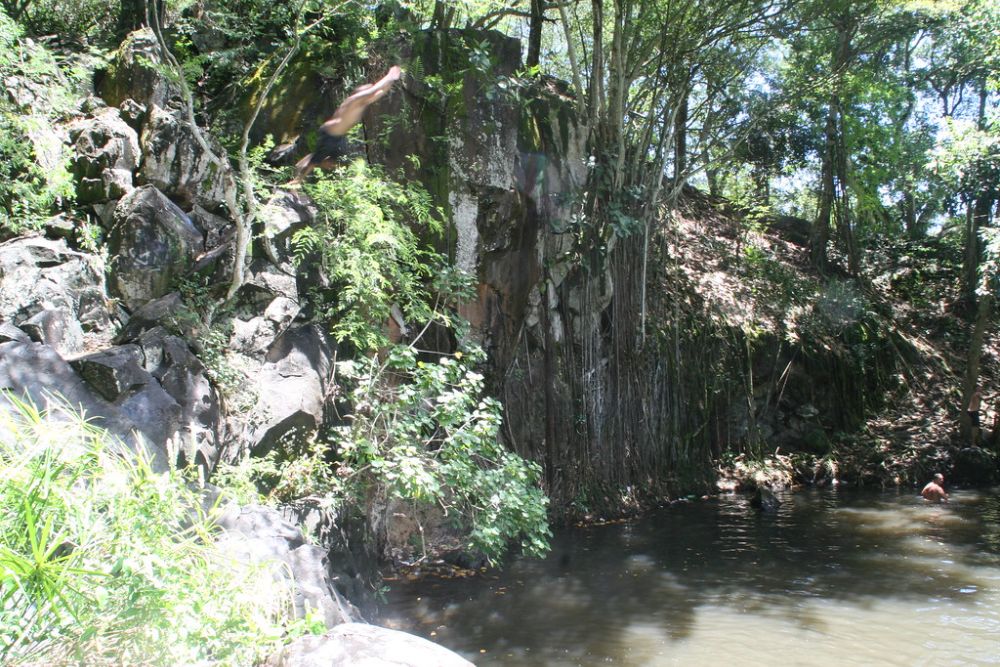
Located in upper Kalihi Valley, this waterfall flows year-round thanks to its position in one of Oahu’s rainiest watersheds. The access road requires a high-clearance vehicle, which keeps visitor numbers low despite the falls being just 20 minutes from downtown Honolulu.
Three distinct tiers create separate swimming areas, each with its character and depth. The surrounding cliffs showcase layers of volcanic rock that tell the geological story of Oahu’s formation.
Waimano Falls
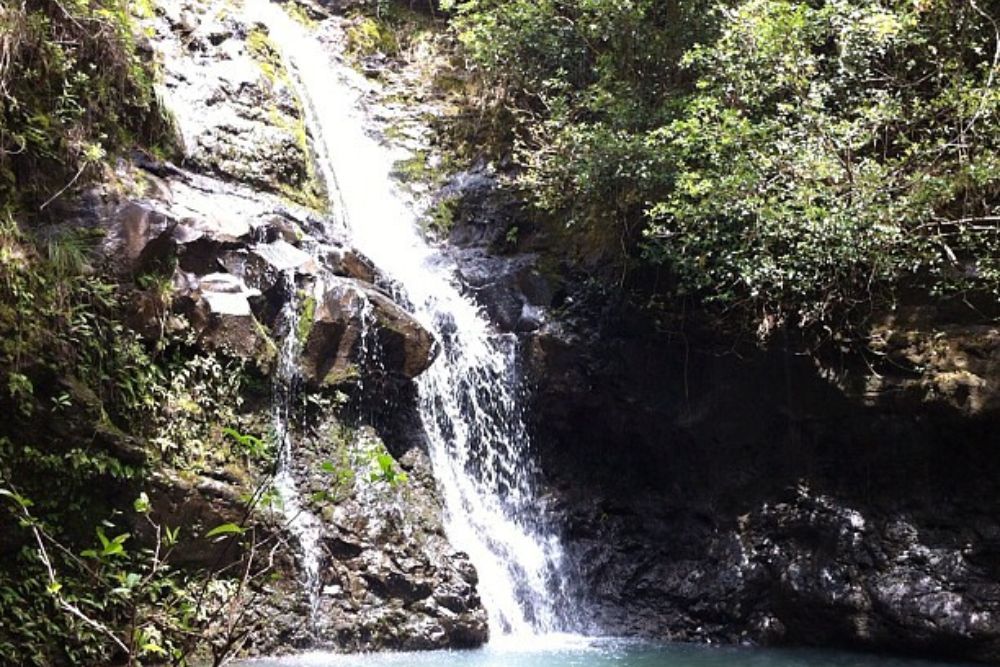
This Oahu cascade drops 200 feet down a sheer cliff face into a pool that’s deeper than most visitors expect. The trail follows an abandoned sugar plantation road for the first two miles before branching into a native forest. Flash floods carved the canyon over centuries, creating the dramatic gorge that frames the waterfall.
Swimming here feels like entering a natural cathedral, with towering walls rising on all sides and filtered sunlight creating ethereal patterns on the water.
Like Travel Pug’s content? Follow us on MSN.
Akaka Falls Upper Pool
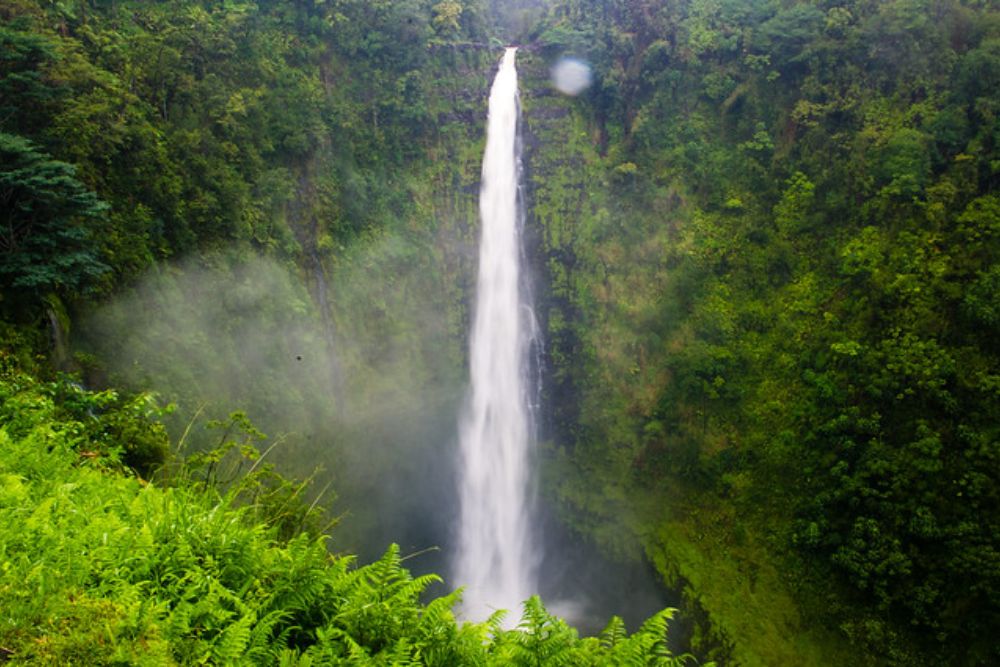
While the famous Akaka Falls viewpoint draws thousands daily, few visitors know about the hidden pool system above the main cascade. An unofficial trail branches off from the state park loop, leading to a series of terraced pools fed by the same stream.
The upper swimming area offers complete privacy and crystal-clear water that’s noticeably warmer than coastal pools. Getting there requires careful navigation through dense vegetation and over slippery rocks.
Umauma Falls Triple Tier
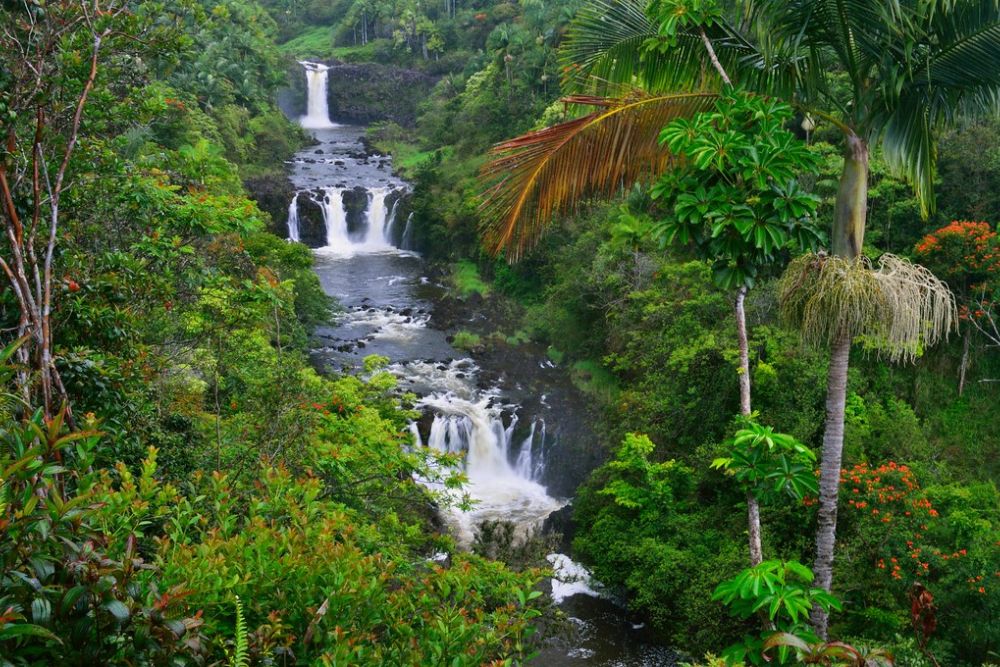
This three-tiered waterfall on the Big Island’s Hamakua Coast creates distinct swimming opportunities at each level. The bottom pool is easily accessible and family-friendly, while the middle tier requires some rock scrambling but offers the most dramatic backdrop.
The top-level pool provides the most privacy and the clearest water, fed directly from mountain streams. Each tier has carved out its personality over thousands of years of erosion.
Hi’ilawe Falls Access Pool
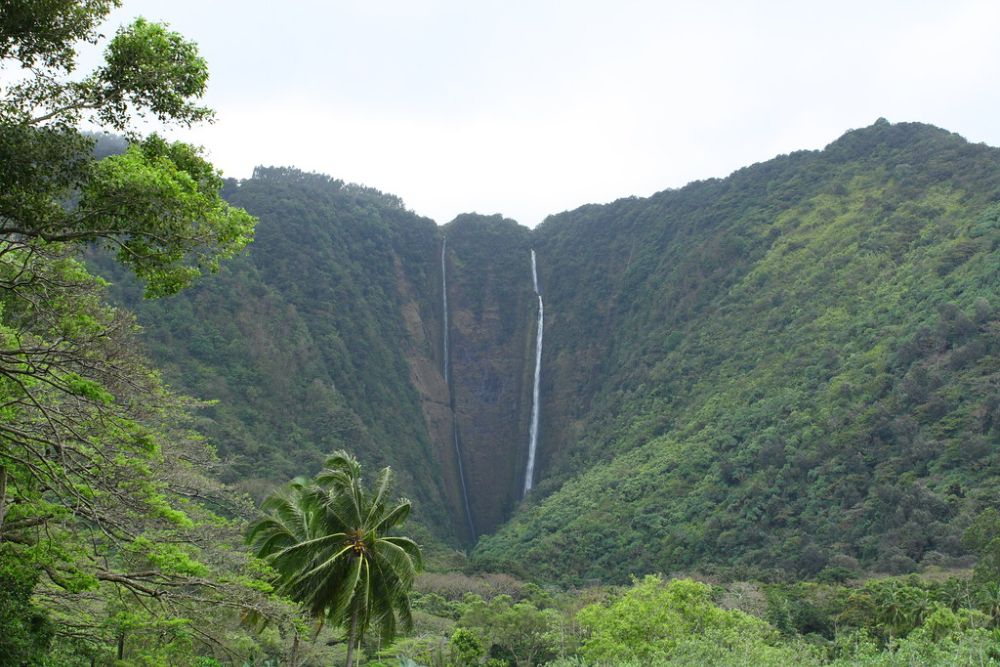
The towering Hi’ilawe Falls in Waipi’o Valley drops 1,450 feet, but few visitors realize there’s an accessible pool system at its base. The journey requires a 4WD descent into the valley, followed by a river crossing and a short hike. Ancient Hawaiians considered this area sacred, and the energy of the place still feels different from typical tourist destinations.
The pool at the base collects water from multiple smaller falls that converge in this remote valley.
Like Travel Pug’s content? Follow us on MSN.
Secret Falls Upper Access
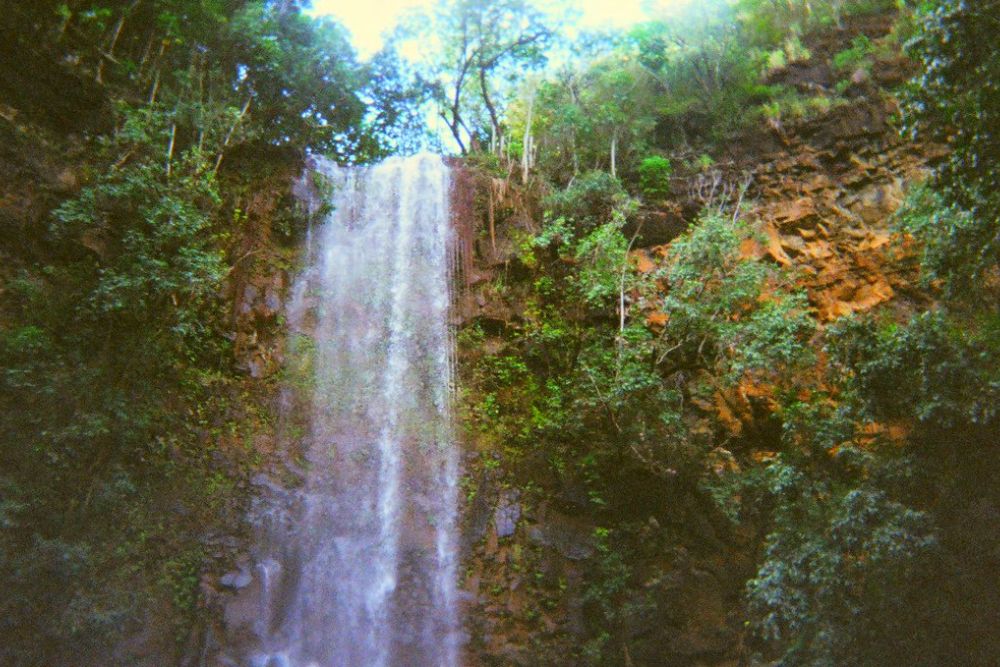
Beyond the popular kayak-accessible Secret Falls, a challenging trail continues upstream to a series of smaller cascades and pools. This extension requires serious hiking skills and the ability to navigate unmarked terrain using natural landmarks.
The reward includes multiple swimming spots with no crowds and water that’s noticeably cleaner than the main falls area. Local guides occasionally lead small groups here, but most visitors discover it through word-of-mouth recommendations.
Hanakoa Falls
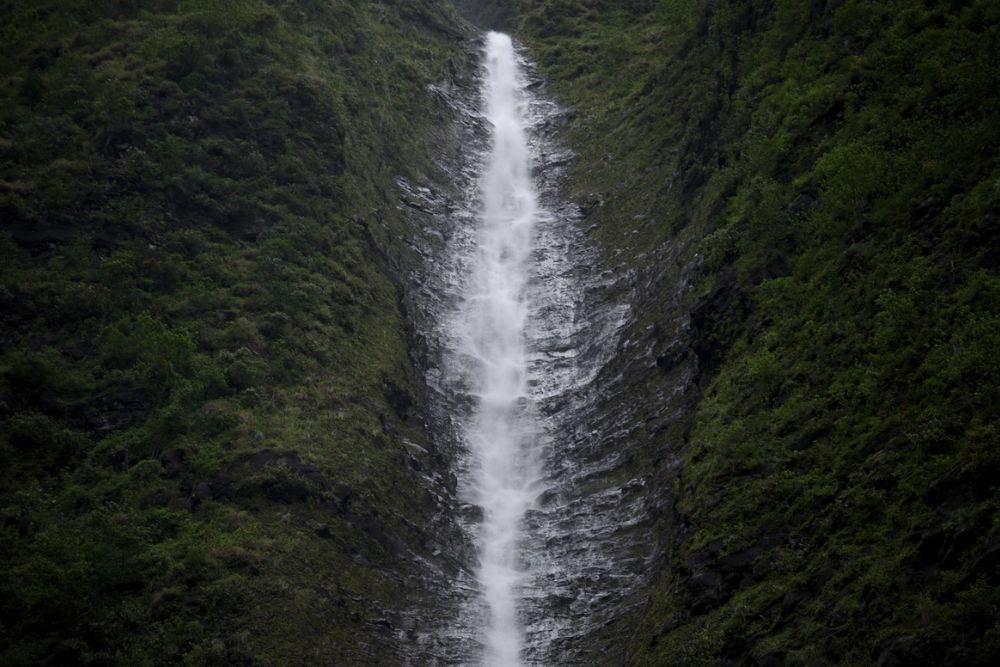
This Na Pali Coast waterfall sits along the Kalalau Trail but requires a detour that most through-hikers skip in their rush to reach Kalalau Beach. The side trail branches off at the Hanakoa Valley camping area and leads to a spectacular 300-foot cascade.
The pool at the base provides a refreshing break during the challenging coastal hike. Camping permits are required to access this area legally, which automatically limits visitor numbers.
Hanakapiai Falls Upper Pools
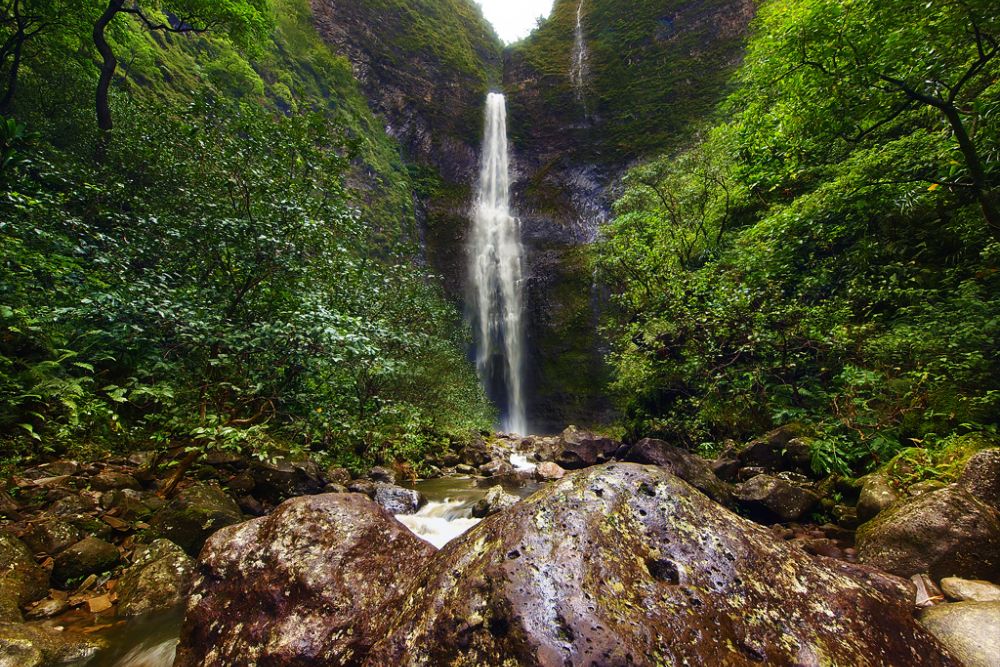
While most visitors to Hanakapiai Falls turn around at the main viewpoint, a steep scramble up the left side of the canyon leads to a series of upper pools. These smaller cascades offer more intimate swimming experiences with water that’s consistently warmer than the main falls pool.
The climb requires careful attention to handholds and foot placement on wet volcanic rock. Few people make this extra effort, leaving the upper pools almost always empty.
Like Travel Pug’s content? Follow us on MSN.
Opaeka’a Falls Swimming Hole
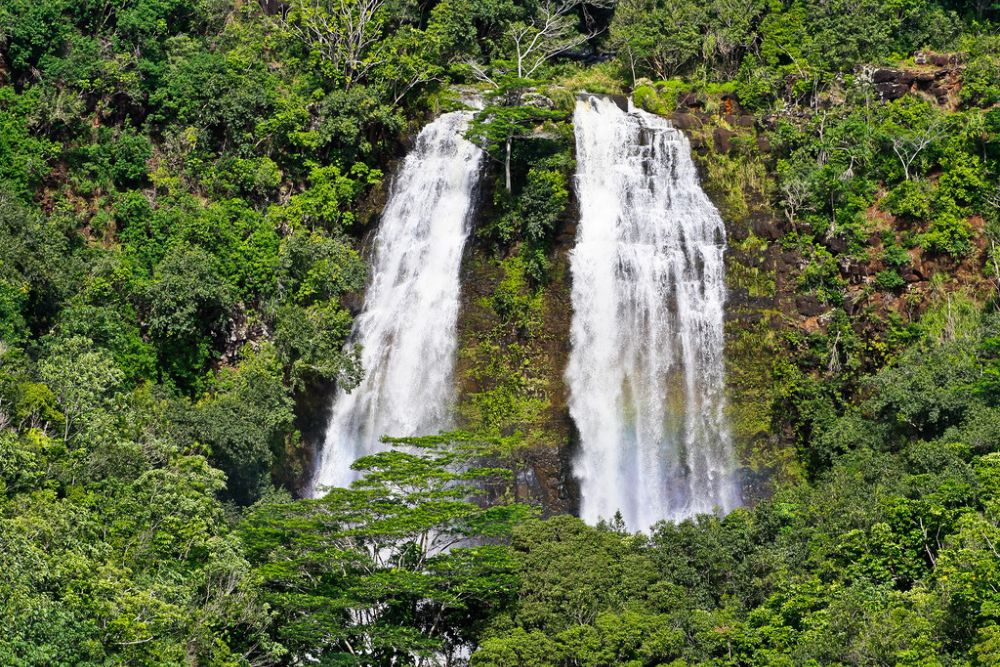
Though Opaeka’a Falls itself isn’t swimmable due to dangerous currents, an unmarked trail leads to a hidden swimming area upstream from the main cascade. The access point sits about half a mile above the famous roadside viewpoint and requires crossing private property boundaries.
Local families have used this swimming spot for generations, creating a small beach area with rope swings and jumping rocks. The water here flows gently compared to the powerful main falls below.
Wailua Falls Upper Basin
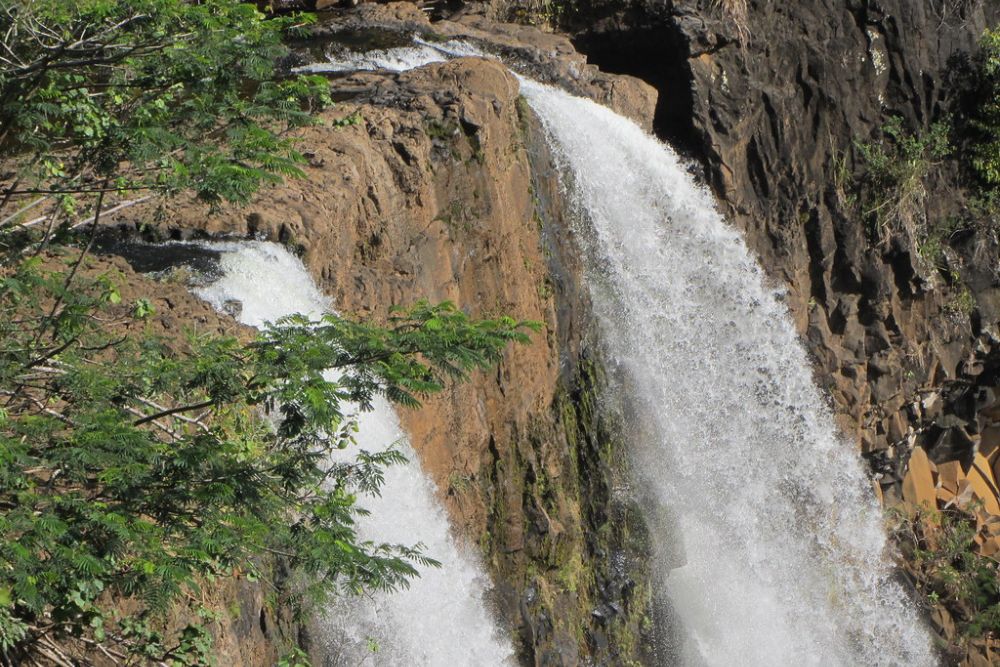
Above the famous Wailua Falls that appears in countless movies and TV shows, a challenging scramble leads to the pool system that feeds the main cascade. The unofficial trail requires rappelling skills or extremely careful rock climbing to reach safely.
Once there, visitors find multiple levels of pools with pristine water and complete privacy. The view from the upper basin includes not just the falls below but also sweeping ocean vistas toward Kauai’s eastern shore.
Makauwahi Falls
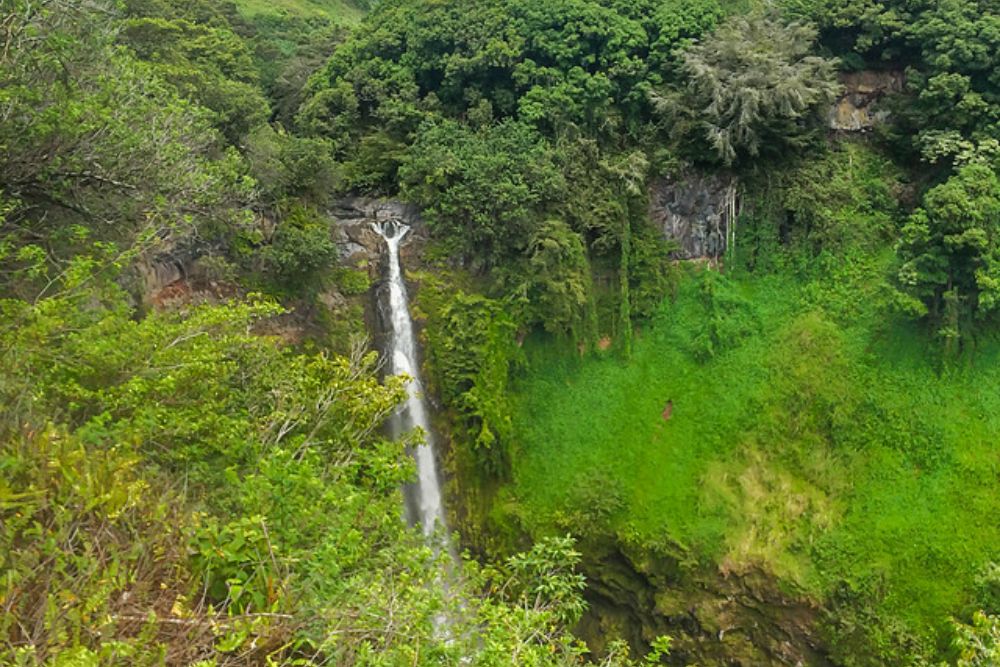
Hidden in a remote valley behind Kauai’s south shore, this waterfall requires serious commitment to reach but rewards visitors with one of the island’s most pristine swimming experiences. The approach involves hiking through former sugar plantation lands that are slowly being reclaimed by native vegetation. Multiple pools of varying depths provide options for swimmers of all abilities.
The surrounding cliffs create natural wind protection, making this spot comfortable even when coastal areas are breezy.
Like Travel Pug’s content? Follow us on MSN.
Waihilau Falls
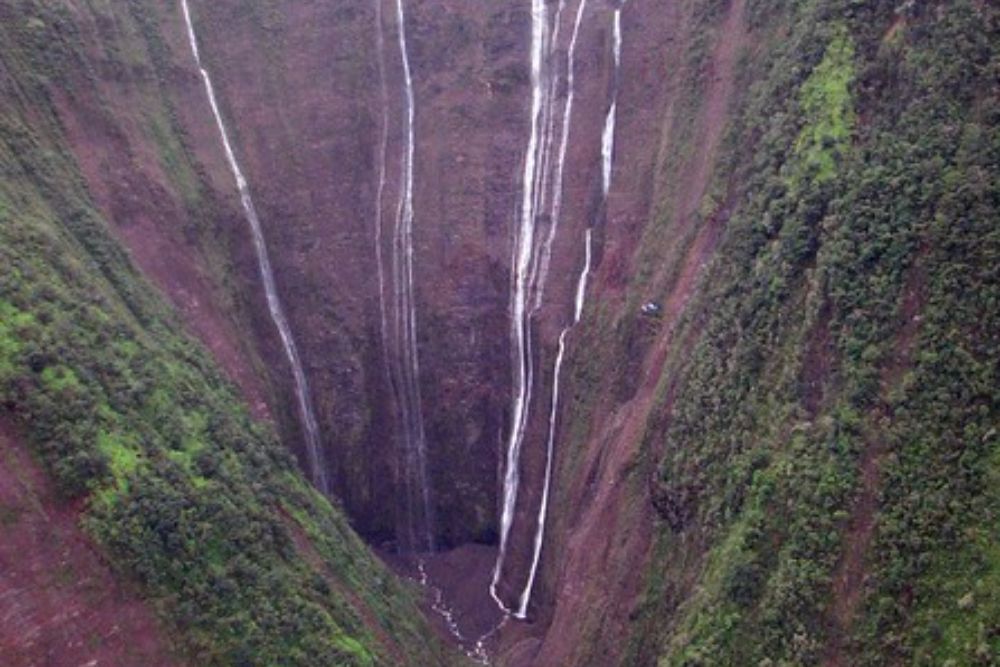
Big Island’s tallest waterfall, at 2,600 feet, drops into Waipi’o Valley in a remote area that most valley visitors never see. Reaching the base requires a full-day commitment, including 4WD valley descent, river crossings, and several miles of hiking through muddy terrain. The volume of water creates a powerful swimming experience, unlike any other waterfall pool in Hawaii.
Ancient Hawaiian legends associate this fall with powerful spiritual energy, and many visitors report feeling the significance of the location.
Blue Pool
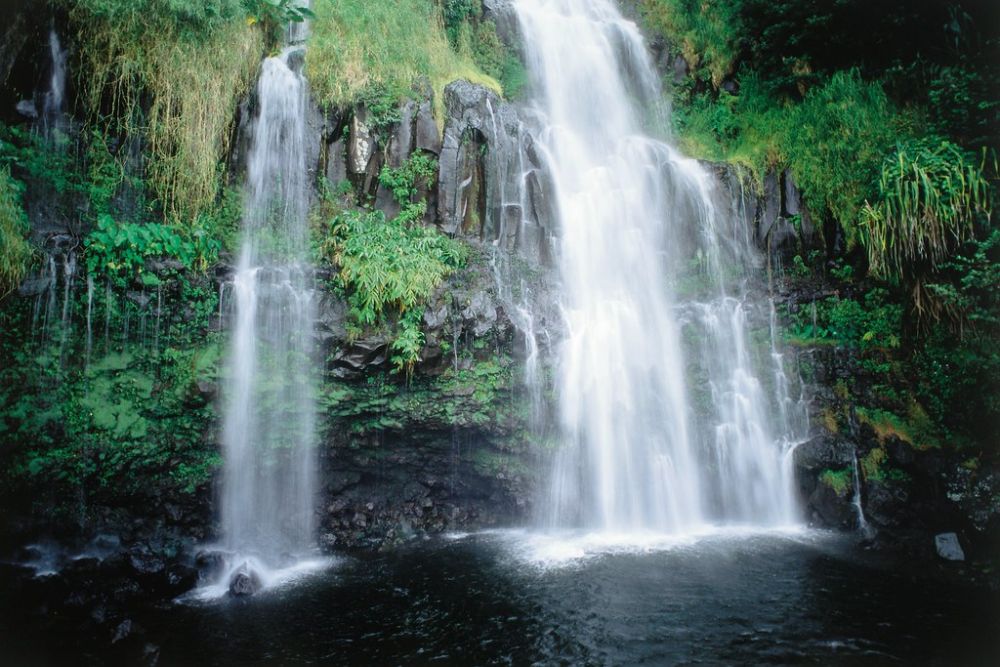
This artificial name describes a natural pool system on Maui’s Road to Hana that’s fed by a small but consistent waterfall. The blue coloration comes from minerals in the volcanic rock that filter the water as it flows through underground channels. Most Road to Hana travelers drive past without noticing the unmarked pullout that provides access.
The pool stays consistently cool and clear, making it an ideal stop during hot Maui days when ocean beaches feel too warm.
Bamboo Forest Falls
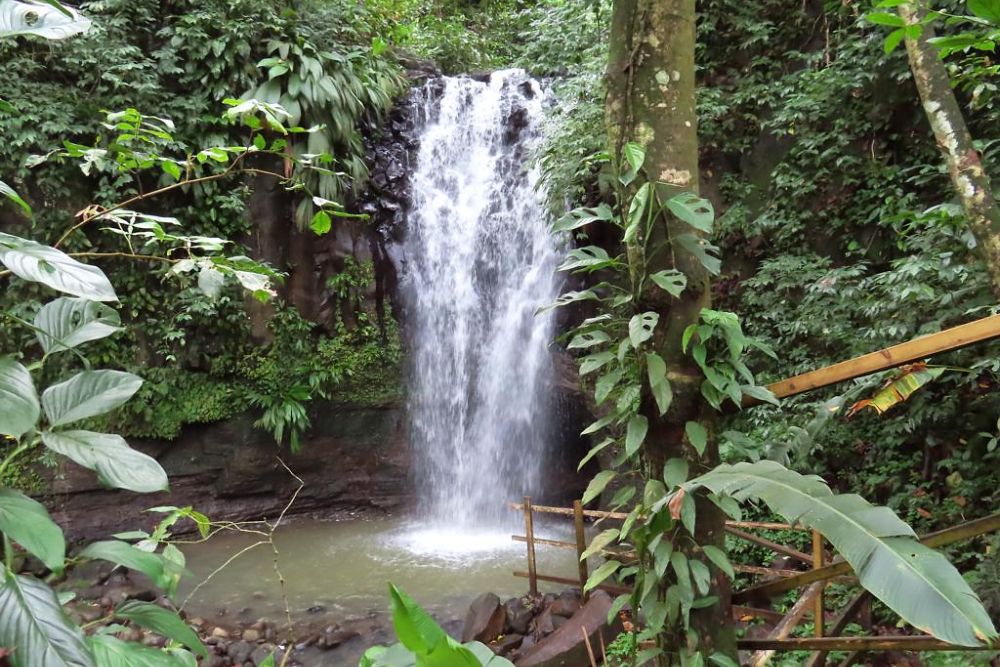
Deep in Maui’s bamboo forest along the Pipiwai Trail, several smaller waterfalls create swimming opportunities that most hikers overlook in their focus on reaching the famous Waimoku Falls. These cascades range from 10 to 30 feet in height and create pools of varying sizes throughout the bamboo grove. The filtered light through the bamboo canopy creates an otherworldly atmosphere, unlike any other swimming experience in Hawaii.
The water temperature stays remarkably consistent due to the forest canopy protection.
Like Travel Pug’s content? Follow us on MSN.
Beyond the Tourist Maps

These hidden waterfalls represent just a fraction of Hawaii’s undiscovered natural swimming pools, scattered across islands that formed over millions of years of volcanic activity. Each cascade tells its own geological story while providing modern visitors with experiences that feel increasingly rare in our connected world.
The effort required to reach these spots ensures they’ll likely remain special places where nature still feels wild and untouched.
More from Travel Pug

- 20 Best Beach Towns in the Carolinas
- 13 Destinations Where Tourists Regularly Regret Their Trip
- 20 Things You Actually Get in First Class
- 20 Small Airports With Aviation Museums
- 20 Places in the U.S. That Are Perfect for a Reset Trip
Like Travel Pug’s content? Follow us on MSN.
